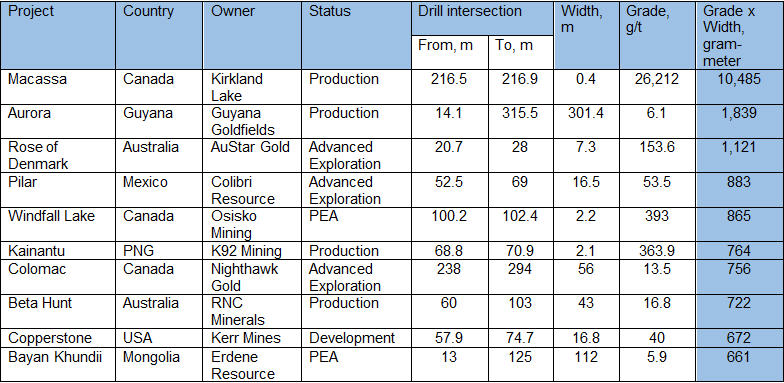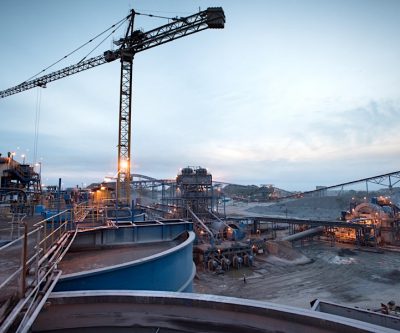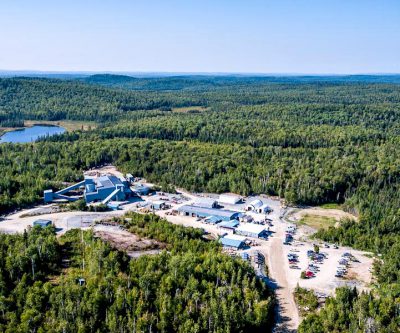Gold exploration trends: companies still cautious despite market rebound
MINING.COM analysed monthly gold exploration trends from January to May 2019 using data from the Mining Intelligence Data Application. The data used represents reporting companies listed on the following stock exchanges: TSX (+TSX-V), ASX, LSE (+LSE-AIM), NYSE, and JSE.
In May 2019, companies reported exploration results for 117 projects (Figure 1), which is slightly higher than a slump observed in April (114). Canada returned to its gold exploration leadership position in terms of a number of projects drilled (39), followed by Australia (34) and South America (18).

Some optimism was back by the end of May and a recently improved gold market environment gives the gold industry hope that exploration activities will rebound in the second half of the year.
April was the worst month so far in 2019 in terms of gold exploration projects drilled and companies still seem cautious when considering starting new / continuing existing drilling campaigns.
In May, companies reported results from 1,709 drillholes, which is the lowest level since the beginning of 2019 (Figure 2). As can be seen, completed drillholes trend follows a projects drilled pattern except an “outlier” month of May when the number of drillholes was down despite increased number of drilled projects. This can be explained by significant decrease in completed drillholes in Africa.

Although early and advanced exploration projects are still comprising the majority of total projects drilled (69 out of 117 projects or 59%, Figure 3), their share dropped noticeably from 69% recorded in March (87 out of 125 projects).
The number of greenfield exploration projects drilled dropped from 31 in January to 21 in May 2019, while number of producing mines drilled was up within the same period, from 28 to 29 projects.
This props up the earlier observation that perhaps, companies are still cautious when allocating budgets to exploration campaigns and do prefer to extend resource base of existing mines and advanced projects rather than investing in early-stage drilling programs.
Despite turbulence and uncertainties still surrounding the gold market and gold industry vision towards exploration, companies managed to achieve some really exciting drilling results.
The following is the list of the top highest-grade gold intersects in May 2019 measured in gram-meters, which is a powerful tool that can be used to compare drill results released by different companies. In cases where multiple high-grade intersections were reported for an individual project during May, only the best interval has been considered.
Top highest-grade gold intersects in May 2019, in gram-meters
#1 Macassa – 10,485 gram-meter
Kirkland Lake Gold’s Macassa Mine, located in the Town of Kirkland Lake, Ontario, is the highest grade gold mine in the world as of March Quarter 2019. With 29.6 g/t of gold reported in milled ore, Macassa is a little ahead of Australia’s Fosterville Mine (29 g/t/) owned by the same company. Macassa leads the pack with both gram-meter record as well as a whopping 26,212 g/t grade of gold detected within the same drilling interval.
#2 Aurora – 1,839 gram-meter
Second highest gram-meter record reported in May belongs to Guyana Goldfields’ Aurora mine in Guyana. Aurora is a flagship gold mine for both the company and the country. Guyana is an emerging gold mining jurisdiction and contains one of the most highly prospective and under-explored gold districts in the world. The greenstone belt of the Guiana Shield is a home to various multi-million ounce gold deposits.
#3 Rose of Denmark – 1,121 gram-meter
AuStar Gold’s Rose of Denmark is a former gold mine that ceased production in 1926 and located approximately 70km southeast of Mansfield in Eastern Victoria, near the town of Gaffney’s Creek, Australia. Austar considers Rose of Denmark a potential substantial future production source. Resource definition completion and maiden resource statement was targeted for June.
#4 Pilar – 883 gram-meter
Colibri Resource’s Pilar Gold Project is strategically located in the historic Sonora gold district which has produced the majority of gold mined in Mexico. The Pilar Gold Project consists of low-sulfidation epithermal mineralization in a highly fractured, altered, and highly oxidized volcanic host rock. Colibri considers highly oxidized material of Pilar ideal for efficient Heap Leach recovery. Initial resource estimation has yet to come.
#5 Windfall Lake – 865 gram-meter
Osisko Mining’s Windfall Lake project located in the Abitibi greenstone belt somewhat 700 kilometres north-northwest of Montréal, Canada. The Windfall Lake Mine Project is a proposed underground gold mine with preliminary assessed AISC of $704/ozt per year.
#6 Kainantu – 764 gram-meter
K92 Mining’s Kainantu Gold Mine located in the Eastern Highlands province of Papua New Guinea. Currently, Kainantu is one of the highest-grade gold mines in the world.
#7 Colomac – 756 gram-meter
Colomac lies within the north central portion of Nighthawk Gold’s Indin Lake Gold Property located approximately 200 km north of Yellowknife, Northwest Territories, Canada. Access to the project area is by winter road from Yellowknife or year-round by chartered aircraft making use of Colomac’s 5,000 foot airstrip.
#8 Beta Hunt – 722 gram-meter
RNC’s producing Beta Hunt gold mine located in Western Australia. A significant high grade gold discovery – “Father’s Day Vein” – was recently made there. RNC hopes to add additional resources to extend the Beta Hunt’s life-of-mine.
#9 Copperstone – 672 gram-meter
Kerr Mines is currently advancing fully permitted past-producing Copperstone Mine project to production. Copperstone is a high-grade gold project located along a detachment fault mineral belt in mining-friendly Arizona. The Copperstone Mine produced nearly one-half million ounces of gold between 1987 and 1993 through open pit mining. Existing infrastructure remains from this time.
#10 Bayan Khundii – 661 gram-meter
Erdene Resource’s Bayan Khundii project located in the Edren Terrane, within the Central Asian Orogenic Belt in Mongolia hosts some of the world’s largest gold and copper-gold deposits. PEA yielded AISC of $714/ozt of gold for this deposit.
(By Vladimir Basov)







Comments